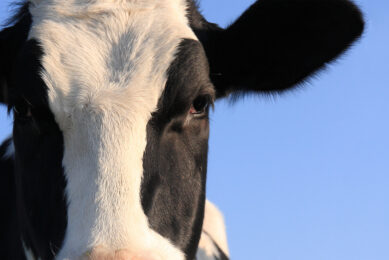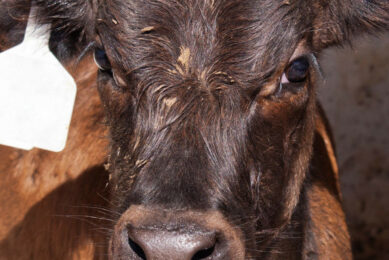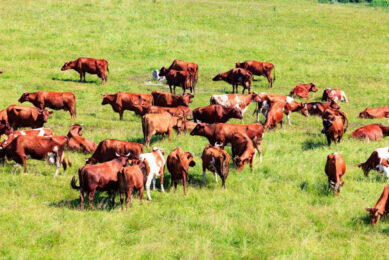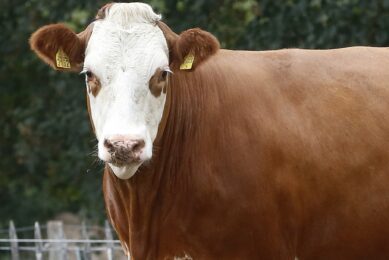Holstein dairy cows producing beef crossbred calves – a closer look
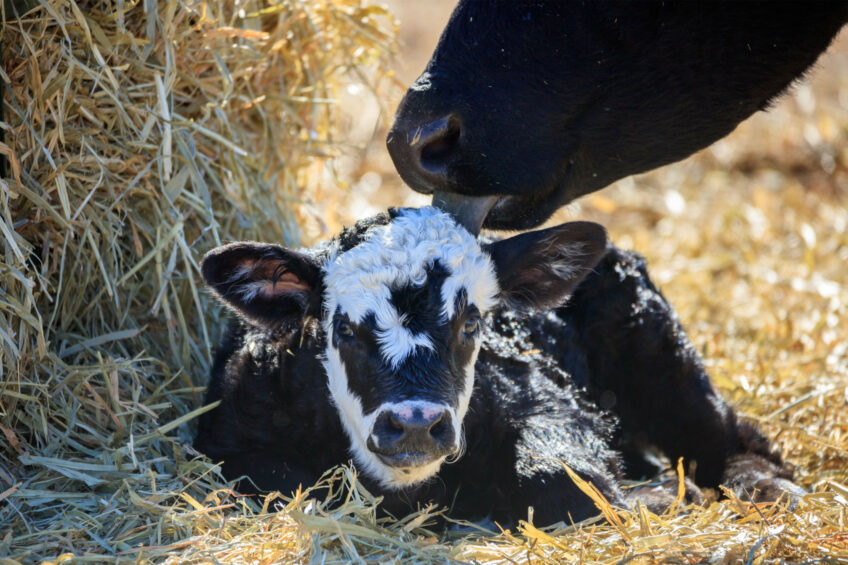
Adding value to surplus calves through crossbreeding beef breed bulls to Holstein cows is one way of making additional money for dairy producers. But there are concerns that carrying and birthing the larger crossbred beef calves could have a detrimental effect on dairy cow health.
Researchers from Penn State University in the US analysed almost 40,000 cows from 10 dairy herds across the Northeast and Midwest that had calves with known Holstein or beef breed sires from 2010 to 2023.
They found that calves sired by beef bulls were as likely to survive birth as those sired by Holstein bulls, with the exception of calves sired by crossbred beef bulls. The risk of a cow experiencing dystocia, or a difficult birth, did not differ by the sire breed or her calf. Likewise, clinical health events experienced after calving and early lactation cessation did not differ between cows that had Holstein or beef-sired calves.
Gestation length
Cows carrying beef-sired calves had increased gestational length compared to those carrying Holstein-sired calves. While calves sired by Angus bulls were only carried for 1 day longer than Holstein-sired calves, those sired by Limousin and Wagyu bulls extended the gestation period by 5 and 8 days, respectively.
Study lead author Bailey Basiel said it was useful for dairy farmers to understand the impact of different breeds on gestation lengths as they could plan for the longer pregnancies and adjust accordingly.
Basiel said the study did not uncover any negative effects of Holstein dairy cows carrying and giving birth to beef crossbred calves, probably due to the fact that they have large frames and are physically able to accommodate the beef crosses.
“We didn’t see any ill effects, at least in these herds that are using Holstein cows, and I think that’s pretty reflective of the US dairy population,” said Basiel.
Multiparous cows
One important caveat to the study was that the Holsteins were all “multiparous cows”, meaning they had all given birth at least once.
Basiel noted: “It’s not the first time they’ve had a calf, and statistically, traumatic experiences during birthing are a lot more likely to happen the first time a cow is giving birth, because she’s smaller and she’s never done it before. So, at least, in these older cows – cows that had at least one lactation before – we saw no differences in calving ease or stillbirth.”
Cows that carried beef sired calves did not differ in milk, milk fat or milk protein yield when compared with those that carried Holstein-sired calves.
Team leader Tara Felix and associate professor in the Department of Animal Sciences at Penn State, added: “Our results suggest that current beef-dairy sire selection parameters in the United States are not negatively affecting the dairy cow.”
The next research will look at determining whether Jersey cows can safely produce beef crossbreds without suffering health and milk yield problems.
The research is published in the Journal of Dairy Science: The impact of beef sire breed on dystocia, stillbirth, gestation length, health, and lactation performance of cows that carry beef × dairy calves – Journal of Dairy Science
Join 13,000+ subscribers
Subscribe to our newsletter to stay updated about all the need-to-know content in the dairy sector, two times a week.



